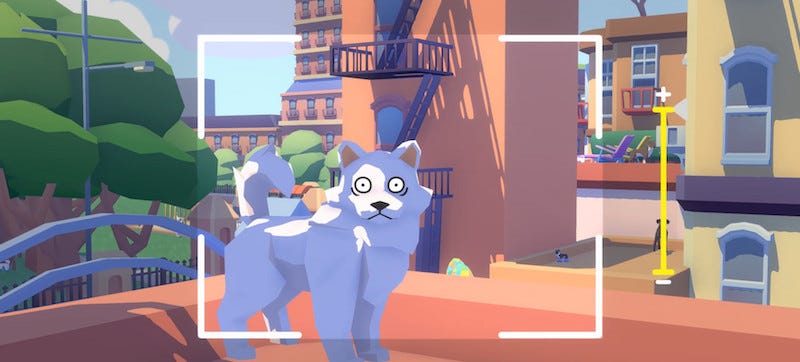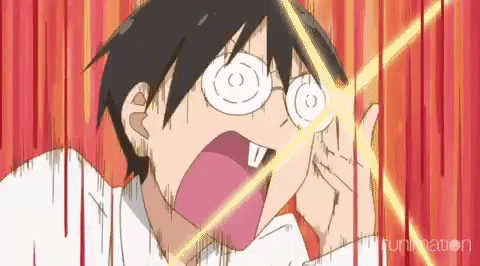Should game devs become YouTubers to get (more) successful?
If you can't beat 'em, join 'em.
[The GameDiscoverCo game discovery newsletter is written by ‘how people find your game’ expert Simon Carless, and is a regular look at how people discover and buy video games in the 2020s.]
Welcome back to your midweek update from the Haus Of Discover. This time, we’re leading with an interesting subject. Instead of pitching all those photogenic, influential YouTubers - why don’t you just become a slick, photogenic YouTuber?
The ‘YouTuber as dev’ trend, explored
So normally, the online video game world is divided starkly into two - those people who make personality-led videos for an audience online (‘streamers/YouTubers’), and those people who make games (‘developers’). (Developers do sometimes do dev streams, but they ‘feel’ different.)
But I’ve noticed a small but emerging trend - YouTubers who are also devs, and have a large audience who they talk to their games (or the art of game dev!) about. The above video thumbnail is courtesy of Thomas Brush, who released platform-adventure title Neversong in May to decent success, but has 220k YouTube subscribers as well.
Some of his videos, including ‘5 Steps To Start Making Games’ and ‘Make A Gorgeous Start Menu (Unity UI Tutorial)’ have hundreds of thousands of views. And the presentation of them is very much in full YouTube style - charismatic host talking to camera, etc.
Then there’s Dani, who has 1.45 million subscribers on YouTube for his performative ‘making games’ goofy videos, and even has 1.7 million view (!) on videos like this:
His very goofy-looking upcoming Steam game Karlson has 41,000 Followers on Steam (wow!), which has got to convert to 200,000+ wishlists, surely? (Or thereabouts.) So… interesting trend, huh?
I put a bit of this together myself, but an invaluable guide in assembling this piece was David Wehle of The First Tree fame, whose venture into YouTube with his Game Dev Unlocked channel - after The First Tree had done well already - got him 100k YouTube subscribers in a relatively short time, with videos like this:
David is also selling a Game Dev Unlocked video tutorial series with free Steam game keys and Adobe educational discounts (clever!), and leaning more into the ‘using YouTube to help those who want to make games’ angle.
But many of these channels flip between promoting the creator’s work and giving more general novice/aspirational game dev tips. Though occasionally a YouTuber has a viral video and then turns it into a game, as with Jadon Barnes and his Fun With Ragdolls clips & game.
There are also more pure ‘game tutorial’-based channels, like Code Monkey or Jason Weimann, as well as the 1 million subscriber (!) and now-on-hiatus Brackeys, who concentrates a lot on Unity tips. (This further underscores how crazy popular that game engine has got.)
Anyhow, I’m not claiming each of you should all immediately start being a YouTuber. But there’s definitely a mass of people wanting to hear about how to make games on YouTube, who then might identify with you and your game.
So if you’re comfortable in front of a camera and want to build a channel and try to harness the YouTube algorithm - hey, it’s another game discovery mechanism? The idea of people finding your game because they like your videos is an intriguing one.
What’s your one-line game pitch?

So for the second ‘featured spot’ in this newsletter, I wanted to resurrect a particularly good Twitter thread which Kitfox’s social media/community maven Victoria Tran posted a couple of weeks ago. The hook/marketing discussion starts like this:
The whole thread is great, but wanted to focus on Victoria summing up some of the publisher-developer’s titles in four to ten words (all the space she had on Twitter!), as follows:
- Boyfriend Dungeon: "Dating simulator, dungeon crawler!"
- Lucifer Within Us: "Mystery timeline scrubbing mechanic"
- Pupperazzi: "Take photos of cute dogs and upgrade your camera"
- Mondo Museum: "Put your creativity on display to curate the world's best museum!"
I think the ability to describe your game - even minus visuals - in that short amount of space is a key to understanding if it’s hook-y or attractive. (All of these sound enticing to me, which is a great start.)
But this isn’t just a post-hoc marketing task. Too often, I feel like people treat the act of signing or creating a game and the act of describing/hyping it as separate tasks. Victoria’s done a great job of communicating the hook. But somebody - her and others at Kitfox - has also considered the hook at an earliest stage when both a) starting to develop it or b) deciding to publish it.
So, my challenge to you: for a game you’re just starting to make or considering publishing, what’s the 10 word pitch? And when you tell people about it, are they excited, even without seeing the game?
(This task isn’t a ‘must’ to have a hit game, or even a critically acclaimed one. But if you can get it right, you might climb up the discoverability tree quicker than others.)
More stuff….
OK, let’s chunk through a few more miscellaneous links. Before we go into bullet point form, just wanted to note that the Steam Autumn Game Festival just kicked off this second, with lots - and i mean lots - more game demos.
Valve is also showcasing games via videos from streamers/speedrunners this time, which is cool and new, and tracks with their ‘incremental improvement’ ethos:
So watch out for that, and I’ll be interested to hear dev comments on how the (presumably very crowded again!) Festival is going for them. OK, onward to bullets:
Conversation over the pricing of some next-gen games is amping up, for example in this Eurogamer editorial, since “Sony, with the in-demand PlayStation 5 near launch, has decided Demon's Souls, Destruction AllStars, and Marvel's Spider-Man: Miles Morales Ultimate Edition all cost £69.99 each.” Or similar figures in Euros/US dollars. FWIW, I still think top indies should be pushing their pricing up towards $30 USD - maybe this window-broadening will help with that?
Looks like Steam has just (optionally!) enabled chat filtering for “the most commonly used strong profanity and slurs” in Steam chat - for games that choose to use it. Imagining there may be many groans from the ‘very online’, but it seems like a net positive, since it’s optional on both dev and player sides?
There’s more discussion of ‘why keep making incompatible upgraded versions of consoles?’, this time from Switch share price bulls. “‘With every console generation, the install base resets to zero and their earnings power essentially resets to zero,’ said Toan Tran of investment manager 10 West Advisors. He says Nintendo can break free by releasing a new and more powerful iteration of the Switch every few years.” Perhaps - but we’ll see if they do, or just ship a Vitality Sensor-based console instead.
Bonus ‘end of an era’ factoid - in Japan, the PlayStation 5 will finally use the X button to confirm selections, like the rest of the world. Playing imported Japanese PlayStation 1 games on CD used to be hyper-confusing because of this, so it’s good to see (final) standardization after a couple of decades, haha.
Finally, when it comes to the call for funny/weird Steam refund notes (we got some good ones, results in the next newsletter!), it turns out that many devs don’t know where this is located in the labyrinthine Steam back end, oops.
There’s a couple of ways to access, but if you go to Steamworks Sales & Activations site, then click on one of your ‘Steam packages’ (the game’s ‘home’ page), there’s a ‘Refund Data’ link on the right:

If you click through on that, you’ll see the various categories of refund requests. ‘View Notes’ on each will show you what players said when they successfully received the refund. And it’s not too late to contribute with yours if you want, hah.
[This newsletter is handcrafted by GameDiscoverCo, a new agency based around one simple issue: how do players find, buy and enjoy your premium PC or console game? We’ll be launching a ‘Plus’ paid newsletter tier with lots of extra info/data - watch out for it soon!]



